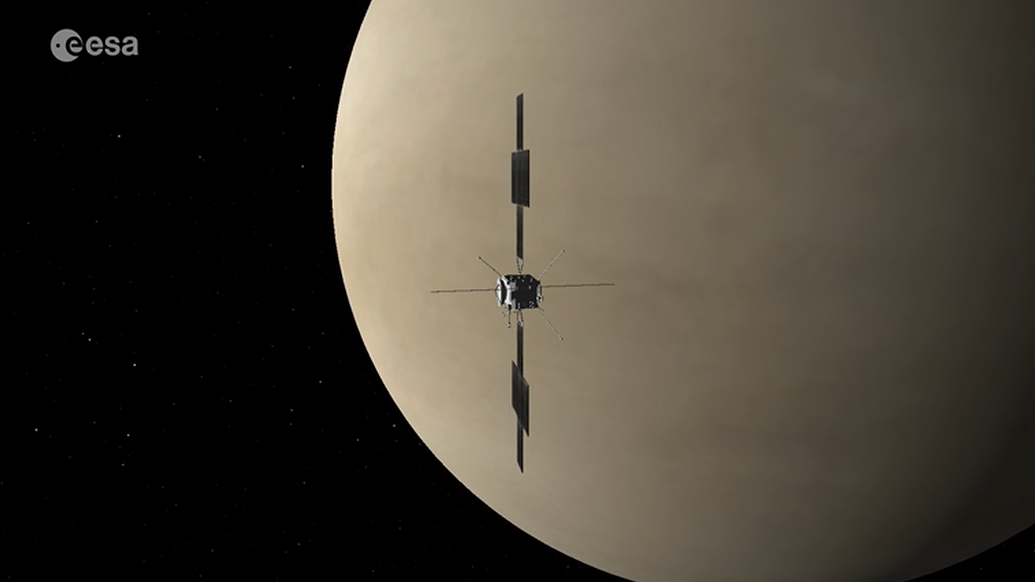The European Space Agency’s (ESA) JUICE spacecraft successfully flew by Venus on August 31, 2023, as part of its ambitious mission to explore Jupiter and its icy moons. The spacecraft, officially known as the Jupiter Icy Moons Explorer, is en route to investigate three of Jupiter’s largest moons: Ganymede, Callisto, and Europa. These moons are believed to contain subsurface oceans beneath their frozen surfaces, making them prime candidates in the search for extraterrestrial life.
While the flyby marked a significant milestone for the JUICE mission, the spacecraft’s operators had to turn off its sensors during the close encounter with Venus due to the extreme heat of the planet’s atmosphere. As a result, no images were captured during this phase of its journey. ESA reported that JUICE’s main, high-gain antenna was utilized as a “thermal shield” during the flyby, which reached its closest approach at 1:28 a.m. EST (05:28 GMT).
Fuel-Efficient Trajectory to Jupiter
The trajectory of JUICE has raised questions, particularly concerning its path to Jupiter. Instead of a direct route, the spacecraft is utilizing gravitational assists from various celestial bodies to conserve fuel. Prior to the Venus flyby, JUICE executed successful maneuvers around the Moon and Earth.
“JUICE will use the gravity of Venus this week to bend its orbit around the sun and gain speed relative to Earth without using fuel,” stated ESA in a press release dated August 25. The spacecraft is set to make another flyby of Earth in 2026 to further refine its trajectory. Following this, JUICE will complete one more orbit around the sun before making a final approach to Earth in January 2029.
The mission faced some challenges earlier this summer when communication issues arose, leading to a brief period where mission operators could not receive health and telemetry data from the spacecraft. After approximately twenty hours of troubleshooting, the team successfully re-established contact, ensuring that JUICE was operating normally.
Future Plans for the JUICE Mission
Once JUICE completes its Earth flyby in 2029, it will continue its journey towards Jupiter, with an expected arrival in July 2031. The spacecraft is approximately 6,000 kilograms (13,300 pounds) and is equipped to gather extensive data about the Jovian system, focusing particularly on its three icy moons.
The mission’s findings could be pivotal in understanding the potential for life beyond our planet. As astronomers continue to explore the mysteries of our solar system, JUICE’s journey promises to provide valuable insights into the conditions present on these distant worlds.





































































